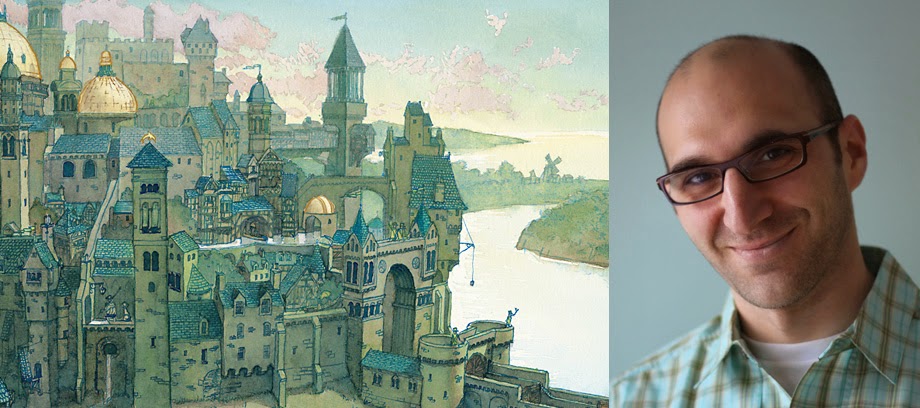Aaron set himself a rule that every spread in Journey had to convey a sense of past, present, and future in the story line, a hint of what's to come or where the characters/plot was going.
Slide show of the various drafts of Journey spreads to figuret out how Aaron incorporated past/present/future into each piece was HUGELY helpful to see in person, this is the sort of thing that makes attending the conference worth every penny, and I'm sorry we can't share it all on the blog, but please, do know when you come to these events you see and hear things you can't see anywhere else. Unless you're a very talented cat burglar or a member of the NSA.
For wordless picture books, the art MUST include a lot of detail or it's not going to work, says Aaron. He doesn't mean sophisticated or realistic detail, it can be a very cartoony style, but there should be a high enough level of complexity on the page that forces the reader to slow down. That's the only way you can get someone to 'read' a wordless picture book instead of 'rush' it.
"There have to be little presents in the spreads that foreshadow the later elements of the story."
Aaron talks about having Bread Crumbs and Easter Eggs in the spreads. Bread Crumbs lead the reader through the story, building interest and desire to turn the page. Easter Eggs, like on a DVD, reward the reader for paying attention and/or rereading.
And here is maybe my favorite thing I learned at this conference. In his books, Aaron wants to create a balance of moments of genuine surprise (on the reveal of a page turn) and moments of satisfaction from a guided correct guess. "It's a very different emotional experience, surprise is entertaining, the correct guess is a level of engagement your reader has with the book." And being correct deepens that level.
SO MUCH OTHER GREAT STUFF! Hope Aaron comes to speak at another conference soon!





No comments:
Post a Comment